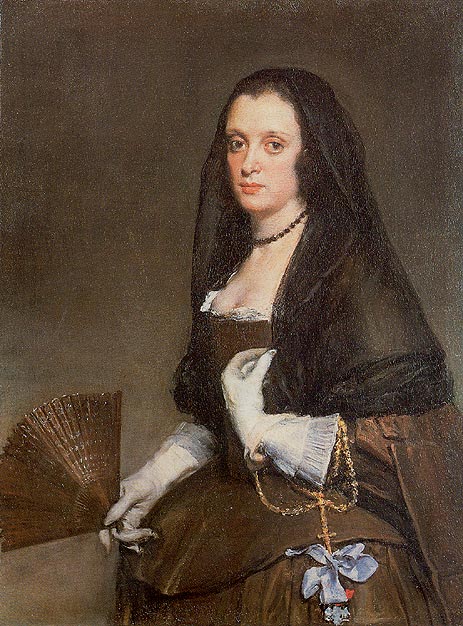Earlier this week the Unicorn Press published the new complete catalogue of the Wallace Collection’s pictures, by Stephen Duffy and Jo Hedley, so to mark the occasion today’s picture is one of my favourite paintings from that small but almost perfectly formed museum: The Lady with a Fan, painted by Diego Velazquez in approximately 1638-9.
In fact this week’s column might be regarded as a modest supplement, of sorts, to the brief entry on the painting in the new Wallace Collection catalogue, since some very recent research – too recent to have been incorporated in that publication – has shed fascinating new light on this tremblingly beautiful but rather enigmatic portrait. The identity of the sitter has long been a mystery, as Jo Hedley states in her text. But that mystery may have been solved by the art historian Zahira Veliz, who published her long and convincingly detailed hypothesis in the March 2004 edition of the Art Bulletin.
Veliz’s theory, ultimately unprovable but undeniably attractive, rests principally on two different types of circumstantial evidence, on the one hand documentary, and on the other sartorial. The costume of the sitter appears to be partly Spanish, in that the lady wears a manto de humo, a dark veil made from a flimsy and transparent material, of a type commonly worn by members of the Spanish nobility. But other elements of her clothing suggest that she is dressed in a style much more closely associated with French fashions of the period. The decollete neckline of her dress, sufficiently low cut to reveal a trace of cleavage, was typically French, whereas Spanish female costume of the time was much stricter and stiffer. Indeed, as Veliz points out, “not a single portrait from the 1630s and 1640s shows a Spanish...


